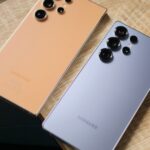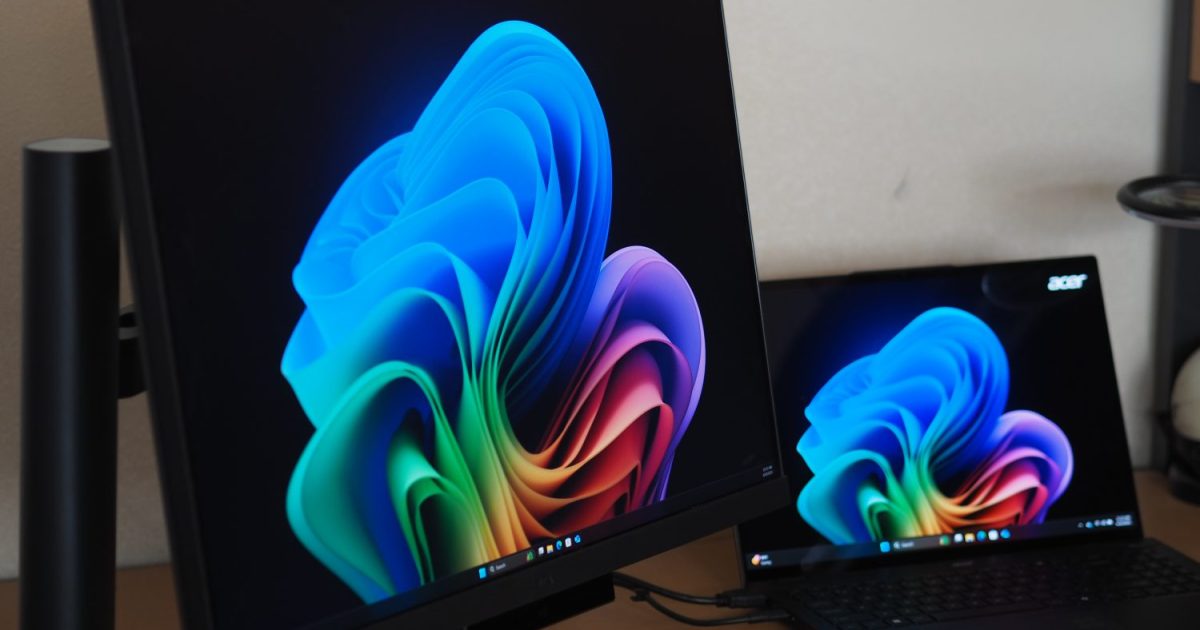BenQ RD280UA
MSRP $630.00
“The BenQ RD280U produces legible text that coders can stare at forever — but it’s for coders only.”
Pros
- Robust build
- Highly legible text
- Feature reduce fatigue
- Good connectivity
Cons
- Not great for non-coders
- Colors either narrow or inaccurate
- Brutalist aesthetic
People can have very different use cases for a piece of equipment. For example, someone who does professional photo editing requires one of the best monitors with the widest and most accurate colors — much more than the typical user who’s doing productivity work or streaming media. A more niche requirement would be coders (and, for that matter, writers) who stare at text and numbers all day and need a monitor that’s optimized for clarity.
BenQ has introduced just such a monitor, the RD280UA, which utilizes a high resolution mated with a special “coder” mode that aims to make staring at characters all day less fatiguing. I took a look at it, and if you need it, then you’ll love it.
Specs
| BenQ RD280U | |
| Screen size | 28.2 inches, 3:2 aspect ratio |
| Panel type | IPS |
| Resolution | UHD+ (3840 x 2400) |
| Peak brightness | 350 nits |
| HDR | None |
| Contrast ratio | 1,200:1 |
| Response time | Not defined |
| Color gamut | 1.097 billion colors |
| Refresh rate | 60Hz |
| Curve | No |
| Speakers | 2W x 2 |
| Ports | 1 x upstream USB-C 1 x downstream USB-C 1 x USB-A 1 x HDMI 2.0 1 x DisplayPort 1.4 |
| Adjustments | 275 degree swivel 90 degree pivot -5 degree to +30 degree tilt |
| Dimensions (HxWxD) | 24.0 inches (width) x 16.8 inches (height) x 3.4 inches (depth) |
| Weight | 25.0 pounds |
| List price | $600+ |
There are actually two versions of the monitor. The RD280UA that I reviewed comes with an ergonomic flexible arm for mounting on a desk, at $630. The RD280U comes with a simple stand, for $600. The flexible arm is a relative bargain at just an additional $30, with a very solid construction that compares well with more expensive options purchased separately. The monitors support the VESA 100x100mm standard so you can use third-party alternatives if you want — or, if you already have a mount, you can buy the RD280U and save that money.
Overall, those prices make the RD280U/UA a bit expensive for a UHD+ IPS monitor, but not egregiously so. It’s not the monitor you’ll want to buy if don’t need that laser focus on character clarity, but it’s not that much more expensive than large, high-resolution IPS display with similar performance.
Design
The last monitor I reviewed was the Apple Studio Display, which conforms to Apple’s typical minimalistic design and construction that manages to come across as elegant and lovely. It exudes quality, and it should given its $1,599 price tag.
By comparison, the RD280UA is a brute. It’s all-black, like most monitors, with a simplistic but somehow imposing aesthetic. It’s relatively thick when you exclude the stand, and it cuts a bold figure. The ergonomic flexible arm that my review unit is equipped with is clearly very well-designed and constructed and it’s obvious that the arm is tailor made for the monitor. It works great. It’s also heavy, thick, and feels incredibly solid. That’s to the good, but it’s not a monitor you put on your desk if you’re looking for a streamlined environment. Almost like brutalist architecture, this thing makes its presence known.

Ultimately, while I do prefer the Apple Studio Display’s all-metal construction, I have no doubts about the BenQ’s long-term reliability. It’s solidly built and I’m certain will provide years of use. The monitor arm has decent cable management as well, helping keep things tidy.
On the back, you’ll find a “MoonHalo” light that automatically adjusts to ambient lighting to provide background illumination that can reduce glare. It’s a nice touch that supports the monitor’s overall ergonomic focus.
The monitor is very adjustable, with tilt, swivel, and height adjustments that are smooth and confidence. And, the RD280UA pivots 90 degrees, making it eminently usable in portrait mode that makes sense for people who work with a lot of vertical text (like coders). It’s also in a 3:2 aspect ratio that provides more height in landscape mode, another plus. The pivot mechanism also works smoothly, more so than some others I’ve tried. You just need to make sure the monitor is high enough to clear your desk when pivoting.
Another aspect that’s very different from Apple’s monitor is the unboxing process. While opening the Apple box and removing the already-assembled Studio Display is quick and painless, the BenQ alternative is a Byzantine nightmare. You need to remove the top cardboard portion where all the cables, stand, and other accessories are contained, then pry the monitor out of the box, then set it on a flat surface where you can safely assemble everything. That’s common to most monitors, and it makes Apple’s attention to detail really stand out.
Ports

The RD280UA has a reasonably complete set of ports, although not as many as a monitor like the Dell UltraSharp 32 4K USB-C Hub monitor. That one has “hub” built right into the (rather long) name, and the RD280UA isn’t quite as diverse.
There are two USB-C ports, one downstream and one upstream that also provides 90 watts of power delivery. That’s enough for many thin and light laptops but won’t power the most demanding machines. That’s okay, because this monitor isn’t necessarily meant for users with superfast laptops with power-hungry chipsets and discrete GPUs. There are two USB-A ports, one on the front and one on the back, along with HDMI 2.0 and DisplayPort 1.4 connections. The DisplayPort connection supports daisy chain to another monitor. There’s also a keyboard-video-monitor (KVM) switch built in, making it easy to connect and use the RD280UA to more than one laptop at a time.
The connections are easily accessible in the real, with a couple underneath the display. Given how easy it is to move the display around on the arm, I didn’t run into some of the usual frustrations with plugging things in. I do wish the labels were more visible, however.
Performance and controls
There are two ways to evaluate the RD280UA’s performance. First is as a monitor aimed specifically at optimizing text clarity to make coding as fatigue-free as possible. The monitor aims at achieving this goal in a couple of ways.
First, it runs at UHD+ (3840 x 2400), which seems like it should be reasonably sharp. At 28 inches, though, that results in 162 PPI. By comparison, the Apple Studio Display’s 5K (5120 x 2880) resolution at 27 inches results in a much higher 218 PPI. A 14-inch laptop with a 2.8K (2880 x 1800) display comes in at 243 PPI. Even an FHD+ (1920 x 1200) 14-inch display comes in at the same 162 PPI. Certainly, at FHD+, a 28-inch display is just 81 PPI, but that doesn’t exactly make the RD280UA a super sharp monitor. So while text looks good enough, it doesn’t stand out to me. The screen also uses a nano-matte technology for extreme anti-reflective properties, which minimizes glare and helps with clarify.
Second, and perhaps more important, BenQ offers a couple of modes — Coding Light and Coding Dark — with color temperature and other variables that are enhanced to make text more comfortably legible. The Low Light Blue Plus mode can use the B.I. Gen 2 sensor to automatically adjust brightness while a Circadian Mode can alter color temperature as the day progresses for greater eye comfort. And the Nigh Hours Protection feature alters the brightness levels and can make the monitor very dark, further avoiding eye fatigue.
All of these modes are accessible through both an on-screen display (OSD) and an app. The latter gives full control over audio volume, brightness and mode, and various other capabilities like the desktop partition feature, HiDPI mode, and high dynamic range (HDR). There’s a tough-enabled function bar extending below the display that makes accessing the various features easy enough.

So, the question is: does it work? I can say that the different modes certainly make a different in how text appears. It’s not something that can be easily demonstrated by photographing it, but in person, Coding Dark mode provides a distinctly different text that’s does seem easier on the eyes and more visible. The color temp becomes warmer and text is clearer — not sharper, but more pronounced. I’m sure that if you code with a black background, the effect would be just as pronounced. I don’t think I would prefer it for writing — I like colder temps and I’m a lot happier with the Apple Studio Displays higher sharpness. But I’m sure coders will appreciate it.
The second way to evaluate the RD280UA is how it performs for most other users? For anyone but the target market, things are very different. The best mode for most users would be RGB mode, which is the brightest, has the second-best contrast, and enjoys the most accurate colors and optimal gamma. But, the colors aren’t as wide, with color gamuts that are pretty much average for IPS displays. That’s fine for productivity work, but not for creators.
The other modes are a hot mess for most users. Colors are wider, but accurate is way off (consider that 2.0 or less is considered good for typical use), gamma is way too dark, and brightness is only average. That might work well for some uses — e.g., coding — but it’s not very good for productivity work, creativity, or even media consumption.
This is very much a single-purpose display. That’s no surprise, given that it accomplishes what BenQ intended, but it’s something to keep in mind when you’re shopping around.
| Brightness (nits) |
Contrast | Gamut (sRGB/AdobeRGB/DCI-P3) |
Accuracy (DeltaE) |
Gamma | |
| Coding Light | 333 | 990:1 | 99% / 86% / 91% | 6.31 | 2.6 |
| Coding Light – Calibrated | 312 | 820:1 | 99% / 87% / 92% | 3.88 | 2.6 |
| Coding Dark | 309 | 880:1 | 99% / 86% / 91% | 3.97 | 3.3 |
| RGB | 413 | 940:1 | 98% / 75% / 75% | 1.61 | 2.2 |
| Cinema | 296 | 780:1 | 99% / 86% / 91% | 7.48 | 2.5 |
Conclusion
The RD280UA is an interesting monitor with a very solid if somewhat brutalist design. There’s no doubt that it’s well-made, and it is optimized for a very specific purpose — making text as easy to read as possible for coders who are going to stare at it for hours a day.
That makes it a little hard to rate, though. Do I give it a high rating for that singular purpose, or do I give it a rating that reflects how suitable it is for a wider audience? I’ll say here that for coders, it’s an excellent monitor. The score I’m giving it is for anyone else who’s looking for a monitor.
Read the full article here












